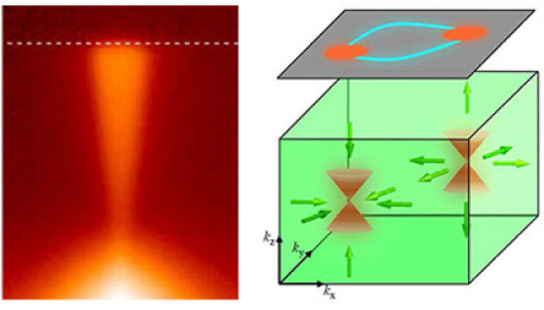
Scientists at Princeton University have shown that negatively charged particles known as electrons can flow extremely rapidly due to quantum behaviors in a type of material known as a topological Dirac semi-metal. Previous work by the same group indicated that these electrons can flow on the surface of certain materials, but the new research indicates that they can also flow through the bulk of the material, in this case, cadmium arsenide. Using a technique called angle-resolved photoemission spectroscopy (left), the researchers measured the energy and momentum of electrons as they were ejected from the cadmium arsenide. The resulting data revealed each electron as two cones oriented opposite each other that converge at a point, a telltale sign of the quantum behavior that allows electrons to act like light, which has no mass. A 3-D reconstruction (right) shows that the cone-shaped electrons are able to move in all directions in the material. The top-right panel reveals that these electrons are linked, allowing them to move even when deformed by bending or stretching, an attribute that gives them their topological nature. Credit: Image courtesy of M. Zahid Hasan and Suyang Xu
Researchers at Princeton University have taken a step forward in the development of a new class of materials, discovering a new quantum effect that enables electrons to dash through the interior of topological Dirac semi-metals with very little resistance.
As smartphones get smarter and computers compute faster, researchers actively search for ways to speed up the processing of information. Now, scientists at Princeton University have made a step forward in developing a new class of materials that could be used in future technologies.
They have discovered a new quantum effect that enables electrons — the negative-charge-carrying particles that make today’s electronic devices possible — to dash through the interior of these materials with very little resistance.
The discovery is the latest chapter in the story of a curious material known as a “topological insulator,” in which electrons whiz along the surface without penetrating the interior. The newest research indicates that these electrons also can flow through the interior of some of these materials.
“With this discovery, instead of facing the challenge of how to use only the electrons on the surface of a material, now you can just cut the material open and you have light-like electrons flowing in three dimensions inside the materials,” said M. Zahid Hasan, a professor of physics at Princeton, who led the discovery.
The finding was conducted by a team of scientists from the United States, Taiwan, Singapore, Germany, and Sweden and published in two papers in the journal Nature Communications. The first paper, published May 7, demonstrates that fast electrons can flow in the interior of crystals made from cadmium and arsenic, or cadmium arsenide. The second paper, published May 12, explores fast electrons in a material made from the elements bismuth and selenium.
In most materials, including copper and other metals that conduct electricity, electrons navigate an obstacle course of microscopic outcroppings, ledges, and other imperfections that obstruct the tiny particles and send them scattering in the wrong directions. This causes resistance and the conversion of electrical current into heat, which is why electronic appliances become warm during use.
In topological insulators and the new class of materials the Princeton researchers studied, the unique properties of the atoms combine to create quantum effects that coax electrons into acting similar to a light wave instead of like individual particles. These waves can weave around and dodge — and even move through — barriers that would typically stop most electrons. These properties were theoretically proposed by Charles Kane and a team at the University of Pennsylvania from 2005 to 2007 and first observed experimentally in solid materials by the Hasan group in 2007 and 2008.
In 2011, the Hasan group detected this fast electron-flow in the interior of a material made from combining several elements — bismuth, thallium, sulfur, and selenium. The results were published in the journal Science.
In the new study in cadmium arsenide, the electrons have an average velocity that is 10,000 times more than that of the previous bismuth-based materials identified by the group. “This is a big deal,” Hasan said. “It means the electrons can flow quite easily in the material and many more exotic quantum effects can now be studied. That just wasn’t possible in the past.”
The most promising application for these materials may be for a proposed “topological quantum computer” based on novel electronics that would use a property of electrons known as “spin” to do calculations and transmit information.
The quantum behavior in this new class of materials has led them to be called “topological Dirac semi-metals” in reference to English quantum physicist and 1933 Nobel Prize winner Paul Dirac, who noted that electrons could behave like light. Semi-metals that are “topological” are ones that retain their spatial electronic properties — and their speedy electrons — even when deformed by certain types of stretching and twisting.
The speeds achieved by these electrons have led to comparisons to another novel electronic material, graphene. The new class of materials has the potential to be superior to graphene in some aspects, Hasan said, because graphene is a single layer of atoms in which electrons can flow only in two dimensions. Cadmium arsenide permits electrons to flow in three dimensions.
The new study redefines what it means to be a topological material, according to Su-Yang Xu, a graduate student in Hasan’s lab and co-first author of the May 7 paper with postdoctoral research associate Madhab Neupane at Princeton and Raman Sankar of National Taiwan University.
“The term topological insulator is now quite famous, and the yet term ‘insulator’ means that there are no electrons flowing in the bulk of the material,” Xu said. “Our study shows that electrons are flowing in the bulk of the material, so clearly cadmium arsenide is not an insulator, but it is still topological in nature, so this is a totally new type of quantum matter,” he said.
The team made the discovery using a technique called angle-resolved photoemission spectroscopy. The researchers shined a very powerful X-ray beam — using a particle accelerator at the Advanced Light Source at Lawrence Berkeley National Laboratory — onto the surface of the material then monitored the electrons as they were knocked out of the interior.
“When the electron comes out, we measure its energy and velocity, and what we found is that electrons coming out of the cadmium arsenide had measurements that were similar to what is seen in particles that are massless,” Neupane said.
In the second paper in Nature Communications, Neupane and co-authors presented a model for controlling the spin direction of the electron particles in a different material, bismuth selenide.
“The Princeton group showed in exquisite details that electrons in certain solids obey the three-dimensional massless Dirac equation,” said Patrick Lee, a professor of physics at the Massachusetts Institute of Technology who was not involved in the work. “While predicted by theoretical calculations, this behavior has never been seen before in real materials until this past year. This work adds greatly to the ongoing excitement of how topology can impact electronic states in real materials.”
The first study, “Observation of a three-dimensional topological Dirac semimetal phase in high-mobility Cd3As2” appeared in the journal Nature Communications on May 7, 2014. The co-first-authors were Madhab Neupane and Su-Yang Xu of Princeton University and Raman Sankar of National Taiwan University. Additional researchers at Princeton who contributed to the work were graduate students Nasser Alidoust and Ilya Belopolski, and postdoctoral research associates Guang Bian and Chang Liu. The team also included Tay-Rong Chang of National Tsing Hua University in Taiwan; Horng-Tay Jeng of National Tsing Hua University and Academia Sinica in Taiwan; Hsin Lin of National University of Singapore; Arun Bansil of Northeastern University; and Fangcheng Chou of National Taiwan University.
The second study, “Observation of a quantum-tunneling-modulated spin texture in ultrathin topological insulator Bi2Se3 films,” appeared in the journal Nature Communications on May 12, 2014. The first author was Madhab Neupane. Co-authors at Princeton were Su-Yang Xu, Nasser Alidoust, Ilya Belopolski, Chang Liu, and Guang Bian. Also on the team were Anthony Richardella, Duming Zhang and Nitin Samarth of Pennsylvania State University; Jaime Sánchez-Barriga, Dmitry Marchenko, Oliver Rader and Andrei Varykhalov of Helmholtz Center Berlin for Materials and Energy; Mats Leandersson and Thiagarajan Balasubramanian of MAX-lab, Sweden; Tay-Rong Chang of National Tsing Hua University in Taiwan; Horng-Tay Jeng of National Tsing Hua University and Academia Sinica in Taiwan; Hsin Lin of the National University of Singapore; and Susmita Basak and Arun Bansil of Northeastern University.
Primary funding for both studies was provided by the U.S. Department of Energy’s Office of Basic Energy Sciences (grants DE-FG-02-05ER46200, AC03-76SF00098, and DE-FG02-07ER46352).
References:
“Observation of a three-dimensional topological Dirac semimetal phase in high-mobility Cd3As2” by Madhab Neupane, Su-Yang Xu, Raman Sankar, Nasser Alidoust, Guang Bian, Chang Liu, Ilya Belopolski, Tay-Rong Chang, Horng-Tay Jeng, Hsin Lin, Arun Bansil, Fangcheng Chou and M. Zahid Hasan, 7 May 2014, Nature Communications.
DOI: 10.1038/ncomms4786
arXiv: 1309.789
“Observation of quantum-tunnelling-modulated spin texture in ultrathin topological insulator Bi2Se3 films” by Madhab Neupane, Anthony Richardella, Jaime Sánchez-Barriga, SuYang Xu, Nasser Alidoust, Ilya Belopolski, Chang Liu, Guang Bian, Duming Zhang, Dmitry Marchenko, Andrei Varykhalov, Oliver Rader, Mats Leandersson, Thiagarajan Balasubramanian, Tay-Rong Chang, Horng-Tay Jeng, Susmita Basak, Hsin Lin, Arun Bansil, Nitin Samarth and M. Zahid Hasan, 12 May 2014, Nature Communications.
DOI: 10.1038/ncomms4841
arXiv: 1404.2830

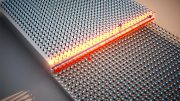
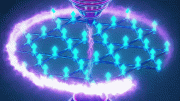
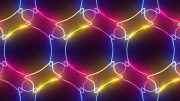
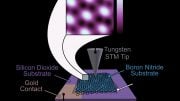
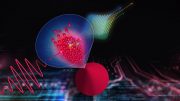

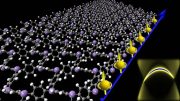
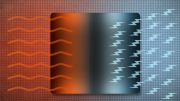
Be the first to comment on "New Quantum Effect Enables Electrons to Flow Rapidly Through the Interior of Topological Insulators"